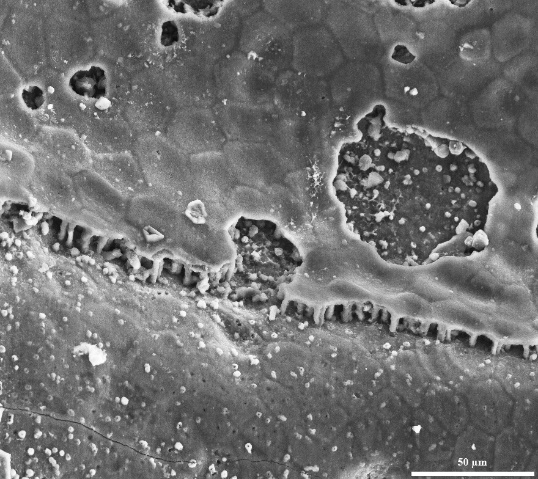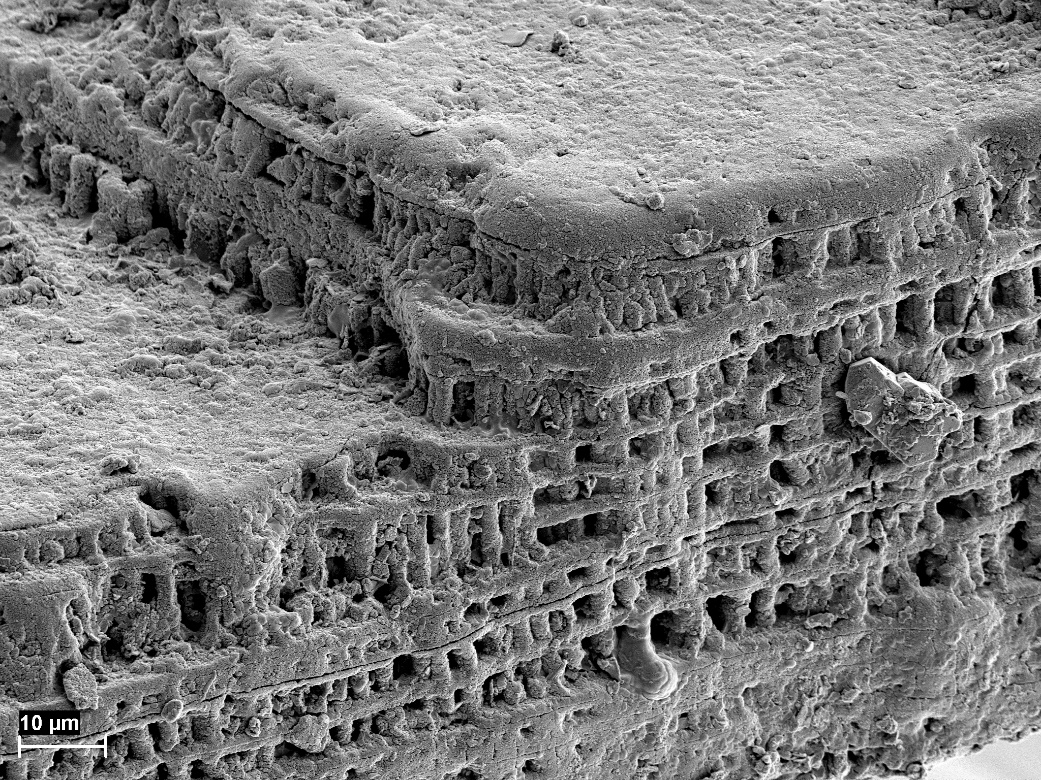Biomineralized columns, stacked in layers like a sandwich gave Cambrian brachiopod shells their strength and flexibility 520 million years ago. To gain insights into the evolution and diversity of this intricate biomineralized columnar architecture, Dr. ZHANG, Zhiliang from the Nanjing Institute of Geology and Palaeontology, Chinese Academy of Sciences (NIGPAS) and colleagues from China and Sweden examined exquisitely well-preserved fossils from some of the oldest families of linguliform brachiopods. The study was published in the international academic journal eLife.
The Cambrian, a geological period around half a billion years ago, witnessed one of the most intense bursts of animal evolution in Earth’s history. During this time, the majority of marine animal groups that we would recognise in the oceans today, emerged and diversified around the globe. One of the key advancements during this explosion of life in the Cambrian was the development of biomineralized shells.
Biomineralization, refers to mineralisation that is biologically controlled, produces organic-inorganic composite skeletons and shells, the construction of which would have played a vital role in the survival and fitness of early animals. This linking of living soft organic tissues with solid earth minerals is a process that has changed the nature of Earth’s fossil record.
Brachiopods, known as ‘lamp shells’ are one of the most successful biomineralized animal groups, having survived for over 500 million years. Most animal groups only have the ability to secrete a single mineral, yet brachiopods are unique animals in that they have the ability to secrete two different minerals, calcium phosphate and calcium carbonate. Although many living brachiopod species have calcium carbonate shells, the calcium phosphatic linguliform brachiopods were one of the earliest shell-bearing animal groups to appear in the fossil record.
“Linguliform brachiopod shells are generally composed of an organic matrix combined with calcium phosphate (apatite) minerals. Linguliform shells are intricately composted of microscopic cylindrical columns, however the development and role of these microscopic columns in brachiopod evolution is unclear”, says Dr. ZHANG.
The fossil samples include Eoobolidae, Lingulellotretidae and Acrotretidae were taken from the Cambrian Series 2 Shuijingtuo Formation of southern Shaanxi and western Hubei in South China – a region that is widely considered to be one of the centres for the origination and early dispersal of linguliform brachiopods.
Their study reveals that the microscopic columns were stacked on top of each other to form a secondary layer of the shell, in what the authors refer to as the “stacked sandwich model” (because of the resemblance to the cross section of a sandwich). This stacked sandwich columnar architecture increases the shell’s toughness, flexibility, and ability to resist fractures, by filling the space in between the columns with organic material – resembling the columns and reinforced concrete often used in the construction of buildings.
“Thus, we hypothesize that this efficient and economical shell architecture has likely played a significant role in the evolution of linguliform brachiopods”, says Dr. ZHANG, “it may account for the flourish of phosphatic-shelled Acrotretides in the latter half of the Cambrian, and the continued diversification of brachiopods during the Great Biodiversification Event 50 million years later.”
Reference: Zhiliang Zhang *, Zhifei Zhang, Lars E. Holmer, Timothy P. Topper, Bing Pan, Guoxiang Li. 2024. Evolution and diversity of biomineralized columnar architecture in early Cambrian phosphatic-shelled brachiopods. eLife 12:RP88855, 1–32. https://doi.org/10.7554/eLife.88855.

Scanning electron microscopy image of biomineralized columnar architectures and the underlying epithelial cells in early Cambrian brachiopod fossils. Image credit: Z.L. Zhang.

Biomineralized columnar architectures of Cambrian Series 2 phosphatic-shelled brachiopods. Image credit: Z.L. Zhang.
Contact:
LIU Yun, Propagandist
Email: yunliu@nigpas.ac.cn
Nanjing Institute of Geology and Palaeontology, Chinese Academy of Sciences
Nanjing, Jiangsu 210008, China
Download:
